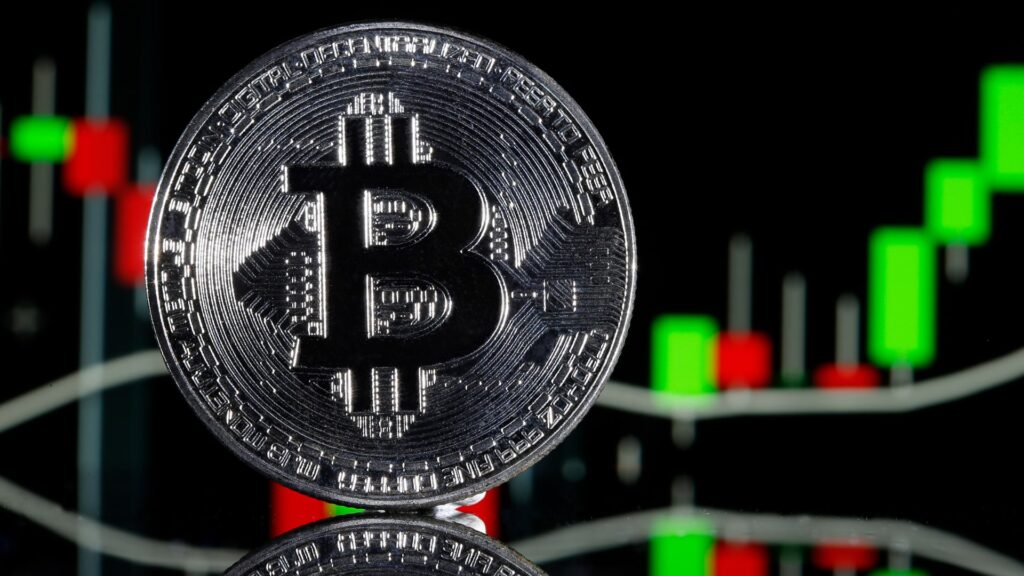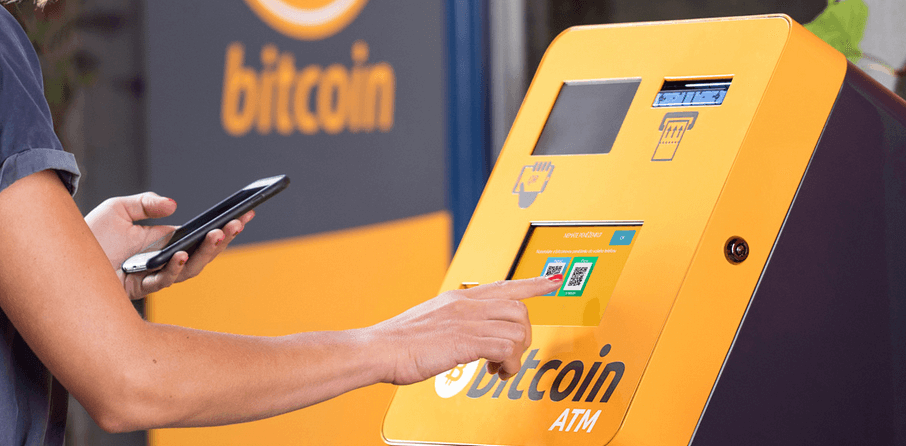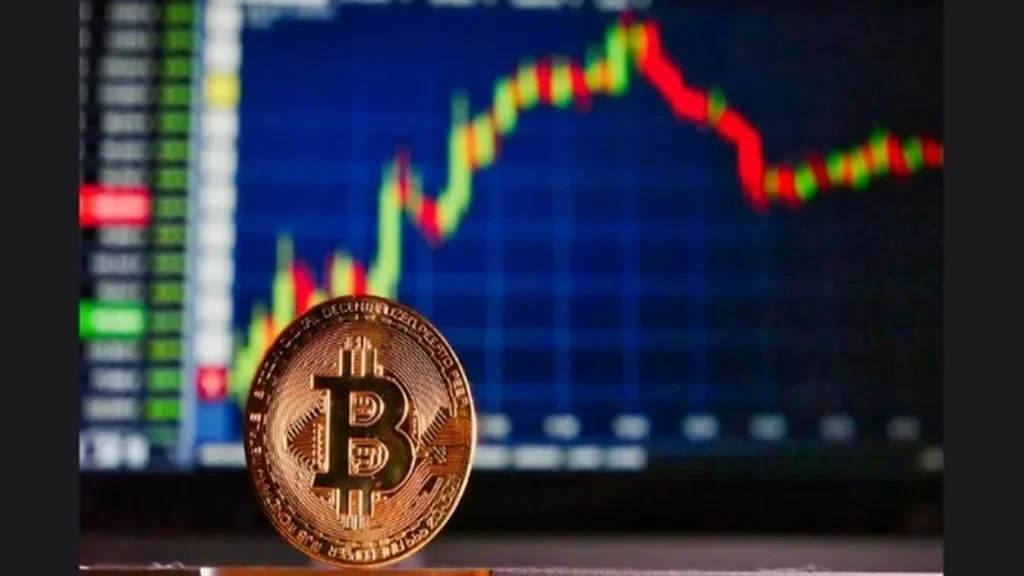Metaplanet, an investment firm known for its aggressive Bitcoin strategy, has significantly increased its holdings, acquiring more Bitcoin as part of its long-term financial plan. At the same time, the company is evaluating the possibility of listing its shares on stock exchanges outside its home country, in an effort to attract international investors.
The latest Bitcoin purchase strengthens Metaplanet’s position as a major institutional holder of digital assets. The company sees Bitcoin as a key asset in its portfolio, with long-term growth potential.
Adding More Bitcoin to Its Balance Sheet
Metaplanet recently added another 156 Bitcoin to its reserves, worth over $13 million at the time of purchase. This brings the company’s total Bitcoin holdings to 2,391 BTC, reinforcing its strategy of using Bitcoin as a hedge against economic uncertainty.
The firm has consistently increased its Bitcoin exposure, aligning with its belief that the digital asset will continue to appreciate over time.
Exploring a U.S. Stock Exchange Listing
Beyond accumulating more Bitcoin, Metaplanet is also looking to expand its presence by listing its shares on international stock exchanges, including in the U.S. This move could provide access to a broader investor base and increase liquidity for the company’s stock.
Company executives have already held discussions with major U.S. exchanges to explore the feasibility of such a listing. The potential listing would mark a significant step in positioning Metaplanet as a global investment firm with a focus on digital assets.
Surging Stock Performance
Metaplanet’s stock has seen notable growth, reflecting increased investor interest in its Bitcoin-focused strategy. Since it began trading on a U.S.-based over-the-counter market, the firm’s shares have steadily climbed, fueled by its expanding Bitcoin holdings and the broader market rally.
Conclusion
With its growing Bitcoin reserves and ambitions to list internationally, Metaplanet continues to push forward as a key institutional player in the crypto space. Its strategic moves signal confidence in Bitcoin’s future and an effort to expand its global footprint in the investment world.
Crypto ATMs have been vanishing at a rapid pace, with over 1,200 machines going offline in early March. This sharp decline comes as new rules and restrictions are introduced, making it harder for operators to maintain their networks.
Despite these losses, the U.S. still hosts the largest number of crypto ATMs globally. However, the contraction of the network raises questions about the long-term future of these machines in the financial landscape.
New Rules to Curb Fraud
Lawmakers have introduced a proposal aimed at reducing fraud in the crypto ATM industry. The proposed measures would require operators to implement more stringent security protocols, including:
- Fraud Warnings – Machines will need to display alerts warning users about common scams.
- Transaction Limits – New users may face restrictions on how much they can send in a given timeframe.
- Stronger Compliance Measures – Operators will be required to establish detailed fraud-prevention policies.
- Enhanced Customer Support – Platforms running these machines must provide real-time assistance to users.
These measures are designed to combat the growing number of scams that have taken advantage of crypto ATM users, particularly those unfamiliar with digital assets.
Why This Is Happening Now
Crypto ATMs have been under increasing scrutiny due to reports of fraud targeting unsuspecting individuals. Criminals have used these machines to facilitate illicit transactions, prompting lawmakers to push for greater oversight.
With financial regulators stepping in, the industry is being forced to adjust. The new rules will make it harder for scammers to exploit these machines, but they could also make it more difficult for legitimate operators to stay in business.
Impact on Crypto Adoption
Tighter rules could slow down the expansion of crypto ATMs, potentially reducing access to digital assets for users who rely on these machines. While the regulations are aimed at protecting consumers, they may also create challenges for businesses in the space.
The long-term effects of these changes remain uncertain. If crypto ATMs become more regulated, they may gain legitimacy, but their accessibility could be reduced.
Conclusion
The shrinking number of crypto ATMs in the U.S. reflects a broader shift in the regulatory landscape. With fraud concerns rising, lawmakers are introducing stricter policies to protect users. Whether these changes will help or hurt crypto adoption remains to be seen.
Users holding these tokens will need to convert them into compliant assets or withdraw them before the deadline.
Binance has announced that it will be removing several stablecoins in the European Economic Area (EEA) by March 31. The decision comes as part of a larger effort to align with new financial regulations that dictate which digital assets can remain available to users.
The removal will impact multiple stablecoins that do not meet the updated requirements. While affected users will no longer be able to trade these assets on the platform, they will still have access to withdrawal and custody services.
Stablecoins Affected by the Change
The stablecoins scheduled for removal include various widely used assets. Users holding these tokens will need to convert them into compliant assets or withdraw them before the deadline.
To assist with the transition, Binance has advised users to move their holdings into stablecoins that meet the necessary regulatory requirements. Users can also exchange the impacted assets for fiat currency, ensuring they can continue their trading activities without disruption.
What This Means for Binance Users
For those affected, the most important step is to review their portfolios and determine if they hold any stablecoins slated for delisting. Binance has made tools available to help users convert these assets before the March 31 deadline.
While this adjustment may be inconvenient for some, it reflects a broader push to ensure compliance with evolving financial regulations. This move also signals a shift in the way digital assets are handled within major trading platforms.
The Bigger Picture
This removal is part of a larger trend where platforms are adapting to stricter regulations. Binance is taking a proactive approach by ensuring that only compliant stablecoins remain available to its European users.
The decision highlights the ongoing transformation of the digital asset space. As new rules take effect, other platforms may follow similar paths, leading to a more structured and regulated marketplace.
Conclusion
Users holding non-compliant stablecoins on Binance must act before March 31 to convert or withdraw their assets. While this change marks a shift in the industry, it also sets the stage for a more standardized approach to digital asset trading.
The hackers behind the recent Bybit exchange breach have escalated their money laundering activities, moving a significant amount of stolen Ether (ETH). This latest development highlights the ongoing challenges in tracking and stopping illicit cryptocurrency transactions.
Continued Movement of Stolen Funds
The latest reports indicate that the hackers transferred over 62,000 ETH, valued at approximately $138 million, in a single transaction. This brings the total laundered amount to over 340,000 ETH, which represents a substantial portion of the funds stolen during the initial breach. With over 150,000 ETH still in their control, it is expected that further laundering attempts will continue in the coming days.
Techniques Used to Obfuscate Transactions
The hackers have been employing advanced methods to conceal the origin of their stolen funds. By leveraging decentralized exchanges, cross-chain bridges, and instant swap services that do not require identity verification, they have successfully converted portions of the stolen ETH into other cryptocurrencies, making it increasingly difficult to trace.
These techniques allow the stolen funds to move across different blockchain networks, limiting the ability of authorities and forensic firms to track them efficiently. The increased use of decentralized finance (DeFi) platforms for money laundering presents an ongoing challenge for security experts.
THORChain’s Role in Fund Movement
One of the platforms reportedly used in these laundering efforts is THORChain, a decentralized protocol that facilitates cross-chain swaps. Internal disputes within the platform’s governance recently surfaced when a decision to block transactions linked to the hackers was reversed, causing a key developer to resign in protest.
This situation has fueled further debate on whether decentralized platforms should take active measures to prevent the movement of stolen funds or remain neutral in blockchain transactions.
Law Enforcement and Security Measures
Authorities have been monitoring the hacker’s wallets and issuing warnings to cryptocurrency exchanges and blockchain networks to blacklist certain addresses. Efforts are being made to track and freeze the stolen assets, but the decentralized nature of these transactions makes recovery difficult.
This incident serves as another reminder of the risks associated with cryptocurrency exchanges and the growing need for stronger security measures. With blockchain technology continuing to evolve, the industry must find a balance between decentralization and regulatory oversight to mitigate future threats.
In a move signaling a significant shift in U.S. cryptocurrency policy, President Donald Trump announced the inclusion of several digital assets—namely Bitcoin (BTC), Ethereum (ETH), Solana (SOL), XRP (XRP), and Cardano’s ADA (ADA)—into a newly established U.S. Crypto Strategic Reserve. This initiative underscores the administration’s commitment to positioning the United States as a leader in the rapidly evolving digital asset landscape.
Bitcoin to Hit $120,000 on Monday
Bitcoin has already experienced a strong rally following Trump’s announcement, but the BTC price is set to skyrocket further on Monday when the Bitcoin ETFs open, as strong institutional demand expected.
Furthermore, institutional investors who sold their Bitcoin positions last week as their de-risked their positions amid tariff fears are likely to FOMO back into the market on Monday.
This, coupled with a short squeeze and Trump potentially delaying tariffs on Canada and Mexico again, means that Bitcoin is very likely to record a new all-time high on Monday.
Evolution of the Crypto Strategic Reserve
During his keynote address at the Bitcoin 2024 conference in Nashville, Tennessee, then-candidate Trump pledged to create a “strategic national Bitcoin stockpile,” emphasizing the importance of Bitcoin in the nation’s financial future. He stated, “If I am elected, it will be the policy of my Administration—the United States of America—to keep 100% of all the Bitcoin the government currently holds or acquires into the future.” This commitment was intended to serve as the foundation of the strategic reserve.
However, following his election, President Trump’s approach evolved. On January 23, he signed an executive order directing the President’s Working Group on Digital Assets to explore the feasibility of a national crypto reserve and to develop a regulatory framework for stablecoins. This order also prohibited the research and development of a central bank digital currency (CBDC) in the United States.
Inclusion of Additional Cryptocurrencies
Expanding beyond Bitcoin, President Trump recently announced that the strategic reserve would encompass other significant cryptocurrencies. He directed the inclusion of XRP, Solana (SOL), and Cardano’s ADA, highlighting a broader acceptance of diverse digital assets. Subsequently, he appended that Bitcoin and Ethereum (ETH) would be at the “heart of the reserve,” reinforcing their foundational role in the crypto ecosystem.
This inclusive approach reflects a strategic effort to diversify the nation’s digital asset holdings, recognizing the unique functionalities and potentials of various blockchain platforms.
Market Reactions and Industry Response
The announcement had an immediate impact on cryptocurrency markets. Prices of the included assets experienced notable surges:
- Solana (SOL): The token saw a 19% increase, reaching $169.71.
- Cardano’s ADA: The asset jumped 50%, surpassing $1 per token.
- XRP: The cryptocurrency affiliated with Ripple experienced a 27.7% rise, climbing to $2.70.
- Bitcoin (BTC): Appreciated by 5.5% to over $91,400 per coin.
Industry leaders have lauded the administration’s proactive stance. The establishment of the Crypto Strategic Reserve is viewed as a pivotal step toward integrating digital assets into the mainstream financial system, potentially fostering innovation and economic growth.
Upcoming White House Crypto Summit
In line with these developments, President Trump is set to host the inaugural White House Crypto Summit on March 7. The event aims to convene industry executives and members of the Digital Asset Working Group to deliberate on the future of cryptocurrency regulation and policy in the United States. This summit underscores the administration’s commitment to engaging with stakeholders and shaping a conducive environment for the crypto industry.
Future Implications
The creation of the U.S. Crypto Strategic Reserve marks a transformative moment in the nation’s approach to digital assets. By embracing a diverse array of cryptocurrencies, the administration signals its recognition of the multifaceted applications and benefits of blockchain technology. This initiative not only positions the United States as a forward-thinking leader in the crypto space but also sets the stage for further integration of digital assets into the broader economy.
As the global financial landscape continues to evolve, the United States’ strategic move to incorporate cryptocurrencies into its national reserves may inspire other nations to reevaluate their stances on digital assets, potentially leading to more widespread adoption and regulatory clarity worldwide.
In a landmark move to bolster the United States’ position in the rapidly evolving digital asset landscape, President Donald Trump has announced the inclusion of XRP, Solana (SOL), and Cardano (ADA) in the proposed U.S. Crypto Reserve. This initiative signifies a strategic effort to strengthen the nation’s digital asset sector and counteract previous regulatory challenges.
Establishing the U.S. Crypto Reserve
On January 23, 2025, President Trump signed an executive order to establish a Presidential Working Group on Digital Asset Markets. This group’s primary objectives include evaluating the potential for a national digital asset stockpile and formulating clear regulations for the cryptocurrency industry. The executive order explicitly bans federal agencies from promoting or establishing central bank digital currencies and reverses previous administration policies on digital assets.
Selection of XRP, Solana, and Cardano
In his recent announcement, President Trump specified that the U.S. Crypto Reserve would include XRP, SOL, and ADA. These cryptocurrencies were selected to diversify and strengthen the nation’s digital asset holdings.
Strategic Implications of the Inclusion
The inclusion of these specific cryptocurrencies reflects a strategic approach to embracing blockchain technologies that offer diverse functionalities:
- XRP: Known for its efficient cross-border payment solutions, XRP can enhance the speed and reduce the cost of international transactions.
- Solana (SOL): Recognized for its high-performance blockchain supporting decentralized applications (dApps) and crypto-assets at scale, Solana offers fast transaction speeds and low fees.
- Cardano (ADA): A blockchain platform for changemakers, innovators, and visionaries, Cardano aims to redistribute power from unaccountable structures to individuals.
By incorporating these assets, the U.S. aims to position itself at the forefront of digital innovation, leveraging the unique strengths of each platform.
Responding to Previous Regulatory Challenges
This initiative also serves as a response to what President Trump characterized as previous regulatory pressures on the crypto industry. By establishing a national crypto reserve, the administration aims to provide a more supportive environment for digital assets, fostering innovation and economic growth within the sector.
Future Outlook
The establishment of the U.S. Crypto Reserve marks a pivotal moment in the nation’s approach to digital assets. As the working group develops regulatory frameworks and explores the potential of a national digital asset stockpile, the inclusion of XRP, Solana, and Cardano signals a commitment to embracing diverse blockchain technologies. This move is expected to encourage further adoption and integration of cryptocurrencies into the mainstream financial system, solidifying the United States’ leadership in the digital economy.
In summary, President Trump’s proposal to include XRP, Solana, and Cardano in the U.S. Crypto Reserve represents a strategic effort to strengthen the nation’s digital asset sector, counteract previous regulatory challenges, and position the United States as a leader in the rapidly evolving digital economy.
Bitcoin’s price is at risk of falling below its previous all-time highs from March 2024, wiping out gains from what has been referred to as the “Trump pump.” With BTC/USD seeing significant losses, traders and analysts are closely watching for a potential bottom.
BTC Price Fills Key CME Futures Gap
One of the major focus points for analysts is the “gap” in the CME Group’s Bitcoin futures market. This gap was formed during Bitcoin’s ascent past $100,000 and has now become a crucial level to monitor.
The key range in question lies at $78,000, and as of February 28, BTC/USD has nearly completed filling this void.
“Bitcoin is getting closer and closer to filling its CME Gap formed back in November 2024. The CME Gap is between $78,000 and ~$80,700,” trader and analyst Rekt Capital confirmed in a post on X.
While this downside gap is being filled, Rekt Capital also pointed out an upside CME gap at around $92,000, which could become a potential target if Bitcoin experiences a relief bounce.
CME gaps often act as short-term price magnets for Bitcoin, with historical data showing that these gaps tend to be revisited either shortly after their formation or later when macro trends shift.
Long-Term Target of $76,000 Remains in Play
Despite Bitcoin’s rise to record highs near $110,000, some seasoned market participants have maintained a cautious stance on its near-term trajectory.
One such figure is BitQuant, a pseudonymous crypto analyst known for accurately predicting key BTC price movements. Throughout Bitcoin’s climb, BitQuant has consistently warned of a potential major correction.
In December, he dismissed the idea that $90,000 would serve as a reliable support level, stating, “Sorry, but no, $90K was not the dip.”
Now, BitQuant remains firm in his prediction that Bitcoin will dip into the mid-$70,000 range before resuming an “up only” trend.
“Are you panicking again? Panic buying or panic selling?” he asked his followers on X, emphasizing the emotional volatility surrounding Bitcoin’s price movements.
Exchange Liquidity Suggests Strong Interest Between $70,000-$80,000
When it comes to identifying market bottoms, traders often look at exchange order books to gauge buyer interest. However, this approach comes with risks, as large players can manipulate liquidity by adding or removing buy orders at strategic levels.
At present, significant liquidity is forming between the $70,000-$80,000 range, suggesting that buyers are prepared to step in at those levels.
“$BTC ~$1.8 Billion in Bids has appeared on the Binance futures pair. These bids are sitting between $70K-$79K,” trader Daan Crypto Trades noted.
“What happens when bids like these appear is varied. Sometimes price never moves into them, when it does start hitting them, it often fills a lot of them before (shortly) reversing. Keep in mind, these are bids that can just as easily be pulled away. Highlighting this as it’s an insane amount and this is something you rarely ever see.”
While this level of liquidity might indicate strong support, it is also important to consider the risk of price manipulation. Large market participants can add significant buy orders only to remove them before execution, causing traders to misinterpret market trends.
Market Liquidations and the Danger of Catching a Falling Knife
Bitcoin’s price decline has led to a surge in liquidations, particularly among long positions. According to monitoring resource CoinGlass, over $3 billion in long positions have been liquidated in just five days.
Keith Alan, co-founder of trading suite Material Indicators, highlighted the risks of trying to predict the bottom too early, a practice often referred to as “catching a falling knife.”
“This is the Bitcoin correction we’ve been waiting for,” he stated on X, sharing a daily BTC/USD chart.
“I’m looking for a wick to the trend line. More importantly, I’m looking for buyers to come in…as long as they don’t front run me.”
As Bitcoin traders and investors navigate the ongoing correction, the market remains highly volatile. Whether Bitcoin will find support in the $70,000-$80,000 zone or see further declines remains a critical question in the days ahead. One thing is certain: Bitcoin’s price action continues to be shaped by both technical factors and large-scale market movements, making it an unpredictable yet compelling asset to watch.
Leading blockchain ecosystem Cronos has launched a groundbreaking feature that allows users to seamlessly convert their cryptocurrency into fiat and spend it using a personal prepaid card. This innovation, made possible through a strategic partnership with Crypto.com, represents a significant milestone in bridging decentralized finance (DeFi) with traditional financial systems.
Revolutionizing Crypto Off-Ramping
Historically, converting cryptocurrency into spendable fiat currency has been a cumbersome process. Users often need to transfer their digital assets to a centralized exchange, convert them to fiat, and wait for bank transfers to process. This new feature from Cronos eliminates these hurdles by allowing users to off-ramp their crypto holdings almost instantly through a direct connection between their web3 wallet and a Crypto.com prepaid card.
By linking their non-custodial wallet on Cronos EVM or Cronos zkEVM to the Crypto.com prepaid card, users can quickly transfer funds from their Cronos wallet to the Crypto.com Crypto Wallet, and subsequently to the prepaid card with a single click. If the selected token is not directly supported, the platform automatically swaps it into USDC or ETH, ensuring seamless and near-instant access to converted funds for everyday transactions.
Bringing DeFi Closer to Everyday Life
Ken Timsit, Head of Cronos Labs, emphasized the significance of this development, stating, “With this new feature, Cronos users can off-ramp their crypto assets almost instantly and spend them wherever prepaid cards are accepted. In eliminating the wait times and multiple steps usually required when cashing out, Cronos is bringing DeFi closer to everyday life. As a result, users can hold their digital assets for longer in the knowledge that they can easily withdraw funds at any time.”
This new capability aligns with the broader mission of making crypto more accessible and practical for everyday use. By reducing friction in off-ramping, Cronos empowers users to leverage their digital assets without the traditional limitations that often deter mainstream adoption.
A Step Toward Mass Crypto Adoption
The partnership between Cronos and Crypto.com is a testament to both companies’ commitment to accelerating the adoption of blockchain technology. Eric Anziani, President and COO of Crypto.com, highlighted the impact of this collaboration: “This collaboration highlights Crypto.com’s commitment to driving the mass adoption of blockchain services by integrating innovative solutions that simplify the user experiences. We have been a longstanding supporter of Cronos, and to launch this feature together is a testament to our shared vision of bridging further mainstreaming crypto and enhancing its daily utility.”
As the industry continues to evolve, such initiatives play a crucial role in making crypto more practical for everyday financial transactions. By providing a direct bridge between DeFi and real-world spending, Cronos and Crypto.com are paving the way for wider adoption and usability of blockchain-based assets.
Seamless Integration Across Cronos Networks
This feature is available across both Cronos EVM and Cronos zkEVM, a high-performance Layer 2 network powered by zkSync technology. Ethereum users, in particular, stand to benefit from this integration, as Cronos zkEVM offers a direct bridge to Ethereum. This enables users to off-ramp their Ethereum-based assets directly onto the Crypto.com prepaid card, further simplifying the process of converting digital holdings into spendable currency.
Future Enhancements: Automated DeFi Yield Transfers
Looking ahead, Cronos is planning additional enhancements to further integrate DeFi into daily financial activities. Following the feature’s launch in February 2025, the company intends to introduce an automatic transfer system for DeFi yields. This update will allow users to directly route their staking rewards and other DeFi earnings into their Crypto.com prepaid card, making it even easier to utilize crypto-based passive income for real-world expenditures.
This future development underscores Cronos’ ongoing efforts to bridge the gap between decentralized finance and traditional banking, making it easier for users to harness the benefits of crypto without navigating complex withdrawal processes.
Bitcoin’s recent price movements have raised concerns among traders and analysts, with many predicting that the cryptocurrency may experience further declines. Investor sentiment has dropped to levels not seen in three years, increasing the likelihood of a correction toward the $72,000 range.
As market uncertainty grows, many are questioning whether Bitcoin’s current downturn is just a temporary pullback or the beginning of a more prolonged bearish trend.
Bitcoin’s Decline from Recent Highs
Bitcoin has seen a significant drop from its all-time high earlier this year. After reaching a peak of over $109,000 in January, the cryptocurrency has fallen to around $78,000, marking a substantial pullback. This decline has been driven by several factors, including increased market volatility, profit-taking by investors, and concerns about regulatory developments in the cryptocurrency space.
Despite attempts to regain momentum, Bitcoin has struggled to maintain key support levels. Some analysts believe that the next major support zone lies around $72,000, where buying pressure could emerge. However, if this level fails to hold, the market could see even steeper declines in the short term.
Weakening Investor Sentiment
One of the key indicators influencing Bitcoin’s recent price movement is investor sentiment, which has dropped to its lowest level since 2022. The Crypto Fear & Greed Index, a popular metric for measuring market emotions, has fallen to extreme fear levels, suggesting that traders are becoming increasingly cautious.
Several factors have contributed to this negative sentiment. The broader macroeconomic environment remains uncertain, with concerns about inflation, interest rate hikes, and potential economic slowdowns affecting risk assets like Bitcoin. Additionally, fears of increased regulatory scrutiny in major markets have made institutional investors hesitant to commit large amounts of capital to the cryptocurrency sector.
Impact of Market Events and Security Concerns
Security breaches and major hacks have also played a role in dampening investor confidence. The cryptocurrency market has recently witnessed high-profile incidents involving stolen funds, further fueling concerns about exchange security and the vulnerability of digital assets.
The impact of these security issues has extended beyond individual platforms, affecting the overall trust in the market. Many investors have responded by moving their funds to self-custodial wallets or reducing their exposure to riskier assets, contributing to the ongoing price decline.
Potential Scenarios for Bitcoin’s Price Movement
With Bitcoin facing a critical moment, analysts are divided on what comes next. If the $72,000 support level holds, Bitcoin could see a period of consolidation before attempting another rally. Historically, strong corrections have often been followed by significant rebounds, as long-term investors take advantage of lower prices to accumulate more Bitcoin.
On the other hand, if Bitcoin fails to maintain support above $72,000, a deeper correction could occur. Some bearish projections suggest that Bitcoin could test lower levels before finding a new equilibrium.
Long-Term Outlook Remains Positive
Despite the current downturn, many market participants remain optimistic about Bitcoin’s long-term prospects. Historically, periods of extreme fear and price corrections have been followed by strong recoveries, particularly as adoption and institutional interest continue to grow.
As the market navigates this period of uncertainty, traders and investors will be closely watching key technical levels and broader macroeconomic trends to determine Bitcoin’s next move. While short-term volatility may persist, the fundamental case for Bitcoin remains strong, with continued advancements in adoption, infrastructure, and regulatory clarity shaping its long-term trajectory.
Bitcoin has rebounded from its recent sell-off, climbing back to the $80,000 range and briefly touching $85,000. This price movement is largely driven by an increase in spot buying and leveraged long positions. Despite the bullish momentum, some analysts warn that further downside risks still exist, and the market may not have found its true bottom yet.
Spot and Margin Longs Drive Price Recovery
One of the key factors behind Bitcoin’s price recovery has been the surge in spot market demand. Large bids have been placed on major exchanges, signaling strong buying interest at these levels.
Additionally, traders using margin and leveraged positions have contributed to the upward movement. This dynamic has resulted in a temporary shift in momentum, giving Bitcoin the support it needed to bounce back from its previous losses.
Caution as Market Conditions Remain Uncertain
Despite the recent gains, some market participants remain cautious. Many traders believe this recovery could be an oversold bounce rather than the beginning of a sustained rally. If buyers fail to maintain control and selling pressure returns, Bitcoin could revisit lower support levels.
Furthermore, macroeconomic factors and regulatory developments continue to influence investor sentiment. Any negative news could trigger another wave of selling, leading to further price corrections.
Technical Indicators and Market Structure
Bitcoin’s technical indicators present a mixed picture. While the recent rebound has pushed prices higher, the overall trend remains uncertain. The market has yet to establish a clear higher high on the daily timeframe, which would be necessary to confirm a bullish reversal.
The Relative Strength Index (RSI) has climbed from oversold levels, suggesting that selling pressure has eased for now. However, if Bitcoin fails to hold above key support zones, another downward move could be on the horizon.
What’s Next for Bitcoin?
While Bitcoin’s price action has improved in the short term, the broader market trend remains uncertain. If buying pressure continues, the cryptocurrency could attempt to consolidate above key levels, paving the way for further gains.
On the other hand, if Bitcoin struggles to maintain its momentum, traders should prepare for potential retests of lower support zones. The coming weeks will be critical in determining whether this recovery is the beginning of a new uptrend or just a temporary relief rally in a broader correction phase.











